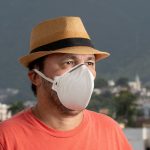
For a needed mood boost, skip social media and strike up an in-person conversation with someone instead. Face-to-face socializing boosts mood more than screen time, a new study finds. People often expect that will be the case, but they don’t always follow that instinct, according to the researchers. “These findings suggest that people may use their smartphones because they enable them to escape the unpleasant experience of being alone, or because they do not recognize or prioritize the mood benefits of social interaction,” the study authors wrote in the report published online recently in the Journal of Social Psychology. “We were interested in getting a sense of how people compare their options, both in terms of how they expect to feel and then how they actually feel after doing these things,” lead author Christina Leckfor, a doctoral student at the University of Georgia in Athens, said in a university news release. For the study, the researchers divided participants into four groups. Two groups predicted how they would feel about different actions, and two groups completed the assigned actions. All of the groups then ranked options from most to least enjoyable. They also used a scale to rate how likely they were to experience a positive or negative emotion from a task. When given three options — using a smartphone, sitting alone or talking to a… read on > read on >



























-300x200.jpg)










